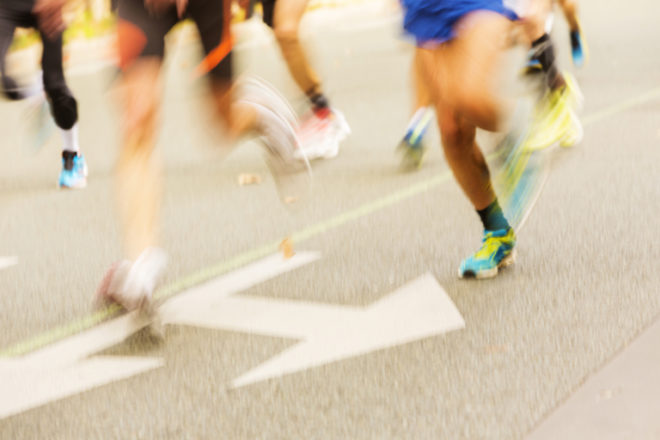
If you think you’re always going to be lagging behind others on the running track, then a new United States study has some reassuring news, finding that slow amateur runners might actually benefit the most from shoes aimed at elite athletes.
Carried out by researchers at the University of Colorado Boulder, the study comes at a time when many runners are wondering how much faster human running times can get.
The question is also what prompted sports brand Nike to launch its Zoom Vaporfly 4% back in 2017 in the hope that it would enable top athletes to break the two-hour marathon barrier. A previous CU study also found that the shoe could improve running economy, which is the number of calories burned per second at an aerobic pace, by 4 percent on average.
For the new study, the researchers re-examined existing treadmill studies of runners carried out over the last few decades, re-calculating the math and taking into account factors such as air resistance and oxygen uptake velocity, to look at whether improving the body’s running economy could really improve speed.
The findings, published in the journal Frontiers in Physiology, showed that for those runners who run slower than 9 minutes per mile, any percent improvement in running economy, whether it is due to high performance footwear, nutritional supplements, a tailwind etc. leads to an even higher percentage improvement in pace.
For those who run faster than 9 minutes per mile, however, each percent improvement in running economy results in less than that percentage improvement in pace.
For instance, a 1 percent improvement in a 2:03:00 marathoner would enable him to run only .65 percent faster, which translates to just a 47-second improvement.
In other words, the faster you are, the harder it is to get even faster.
“We found that at faster speeds, you get significantly less benefit from improving your running economy than you do at slower speeds,” said lead author Shalaya Kipp, with the researchers also pointing out that since Nike released the 4% shoe, the marathon world record has only improved by a relatively small 1.03 percent.
“With current footwear technology, perfect drafting and other factors all falling into place, we still believe a sub-two-hour marathon is possible,” adds co-author Wouter Hoogkamer, noting that the current record time, belonging to Eliud Kipchoge, is very close at 2:01:39. “It’s just going to be a little harder than we thought.”
For those of us not trying to break any records however, the authors say the findings are good news.
“A lot of times recreational runners assume these things are just going to benefit elite athletes when the reality is they can benefit even more than the elites,” said Kipp.
She adds that for a slower runner, wearing the 4% shoes, which improve running economy by 4 percent, could actually translate to as much as a 5 percent improvement in finish times, and that using ways to boost metabolic efficiency, such as drinking beet juice, drafting behind another runner, or doing plyometric exercises can also help improve speed. JB
RELATED STORIES:
LOOK: 3 new running books to level up and inspire your training
What to do post-run to maximize your results

